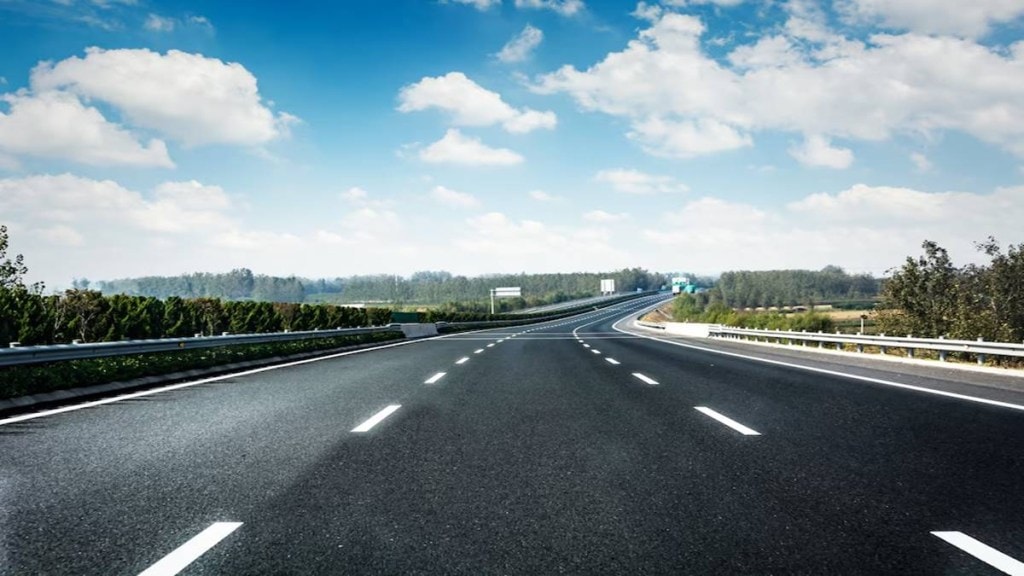As India’s infrastructure journey advances, 2024 has been a remarkable year for road development. With ambitious projects aimed at enhancing national connectivity and improving logistics efficiency. The government has announced several initiatives for the upgradation of the country’s transportation network. These projects will lead to seamlessly connecting India and boost economic growth as well as regional integration.
The government has given sanctions to several projects this year, including eight high-speed road corridor projects with a span of 936 km. An investment of Rs 50,656 crore has been allocated. These projects have been sanctioned by the Cabinet Committee on Economic Affairs, and are likely to create an estimated 4.42 crore of direct and indirect employment, as per PIB statement.
The projects that have been given approvals are the 6-lane Agra-Gwalior National High-Speed Corridor, the 4-lane Pathalgaon-Guma section of the Raipur-Ranchi National High-Speed Corridor, the 4-lane Ayodhya Ring Road, the 6-lane Tharad-Deesa-Mehsana-Ahmedabad National High-Speed Corridor, the 6-lane Kanpur Ring Road, the 4-lane Ayodhya Ring Road, and the 4-lane Kharagpur-Moregram National High-Speed Corridor.
In recent years, the roadways sector has transformed into a bedrock of India’s infrastructure development. Flagship projects like PM Gati Shakti and Bharatmala Yojana are reshaping the national highways and are empowering multi-modal integration across economic corridors, border regions and ports. As the National Highways Authority of India’s (NHAI) expenses have doubled to R 2.07 lakh crore over the last five years, these attempts have boosted supply chains, revived trade and lessened the logistics costs.
Driving Infrastructure Growth
‘’Infrastructure development and environmental stewardship must go hand in hand to unlock India’s true growth potential,’’ stated Y R Nagaraja, Managing Director of Ramky Infrastructure Limited, highlighting the balance between the growth and sustainability. Innovative models such as Toll Operate Transfer, Hybrid Annuity and InvITs have bolstered scalable infrastructure growth, participation from the private sector and has led to sustainable growth.
Major projects underway
4-Lane Ayodhya Ring Road: This road is 68-km long and has been constructed on a Hybrid Annuity Model (HAM) with a budget of Rs 3,935 crore. The objective is to reduce congestion on major highway routes which will have a passage through Ayodhya. This highway will offer commuters seamless connectivity for pilgrims and tourists visiting Ram Mandir. It will also cater to the commuters who will be coming through Ayodhya Airport and Lucknow International Ayodhya Airport.
8-Lane Elevated Nashik Phata-Khed Corridor: This corridor is based near Pune, spanning upto 30-km will be built on Built-Operator-Transfer (BOT) basis, under this set up, government sanctions a concession to a private company to construct, invest and manage the project. The project is expected to be built for Rs 7,827 crore. It will help in eliminating congestion around Pimpri-Chinchwad and will lay out high-speed connectivity to industrial hubs like Bhosari and Chakan.
6-Lane Kanpur Ring Road: This access-controlled section will be 47 km long and will be constructed under (Engineering, Procurement and Construction) terms in which the owner will be responsible for providing its requirements, and the contractor will be solely responsible handle the design, collect al, the materials and equipments and construct it. The project will be built on an estimated budget of Rs 3,298 crore. This highway will also help in dividing the long-distance traffic on major highways like NH 27 and (NH 19 (Golden Quadrilateral). This will result in fostering freight movement efficiency across Uttar Pradesh and adjacent states.
4-Lane Northern Guwahati Bypass: This bypass is part of the Guwahati Ring Road which will spread around 121 km. It will also be inclusive of a crucial bridge over the Brahmaputra, is likely to ease out traffic, and will interlink with the major cities of the North-East. This project will be constructed in BOT mode at Rs 5,729 crore and it will enhance regional connectivity.
6-Lane Tharad-Deesa-Mehsana-Ahmedabad Corridor: This corridor will be erected on a BOT basis at the expense of Rs 10,534 crore. It will interlink Delhi-Mumbai Expressway and Gujarat’s Amritsar-Jamnagar Corridor. This route is anticipated to improve freight movement from industrial regions like Rajasthan, Punjab and Haryana. Moreover, it will cut down the distance of Tharad-Ahmedabad by 20 percent and travel time by 60 percent.
With special focus on Rural Connectivity
The Pradhan Mantri Gram Sadak Yojana (PMGSY-IV) has granted permission for 2024-2029 with a budget of Rs 70,125 crore. It also aims to build a 62,500 km long all-weather roads and provides connectivity to 25,000 unconnected remote regions. The construction will be done by adopting sustainable practices like cold mix technology and recycled plastics.
The all-weather roads will generate socio-economic growth in rural areas, interlinking them to the main market, academic institutions and healthcare facilities.
Sustainable growth and way ahead
To ensure that progress goes hand in hand with environmental objectives, eco-friendly practices like embracing green technologies and recycled plastic have been given significant importance.
The government’s adherence to sustainable and inclusive growth is visible in the Bharatmala Pariyojana. As of October 31, 2024, projects covering 26, 425 km has been given green signal under the scheme. About 18,714 km of construction has already been completed.
The cornerstone continues to be on diminishing the costs of logistics and to provide uninterrupted connectivity to ports and economic hubs.
As these transformative projects are in the process of taking shape, they will upgrade as well improve the connectivity across India.

